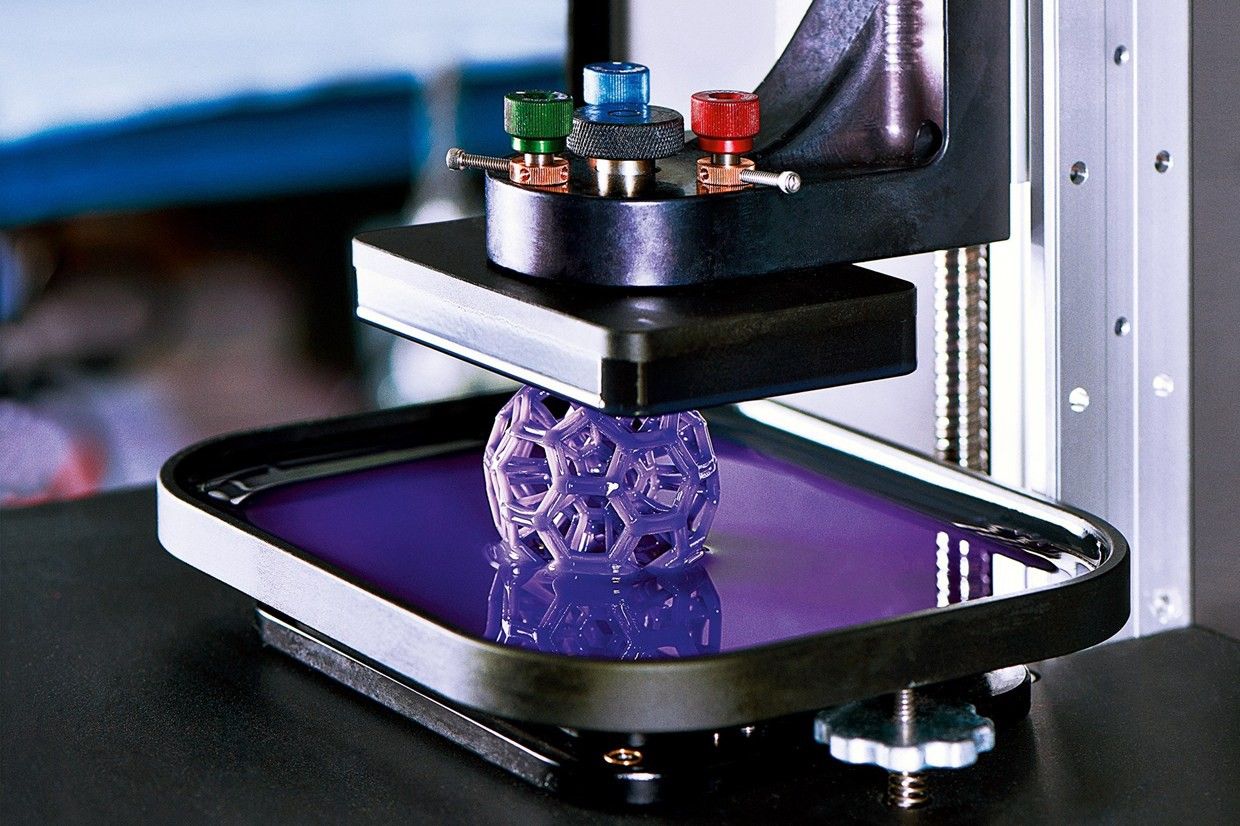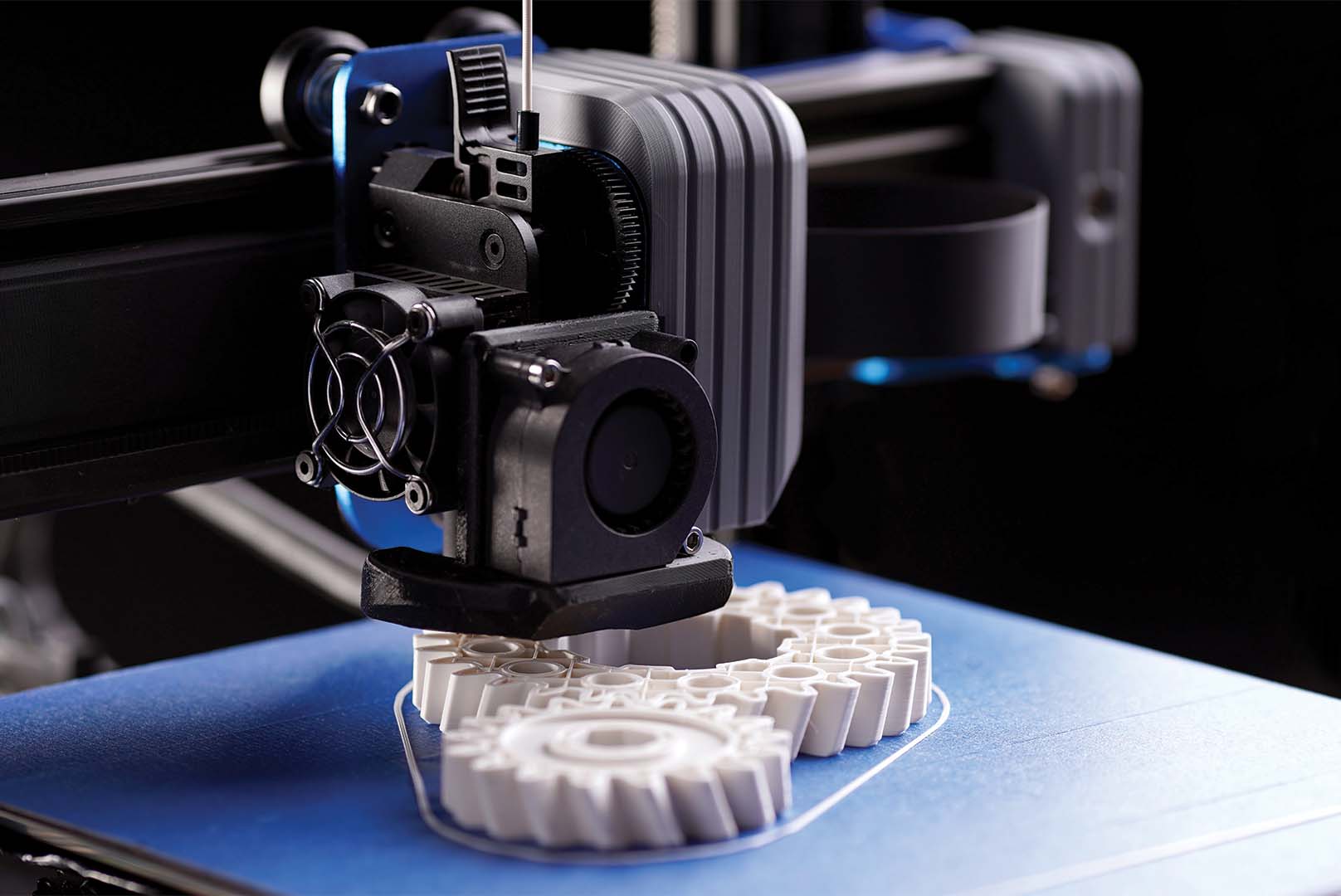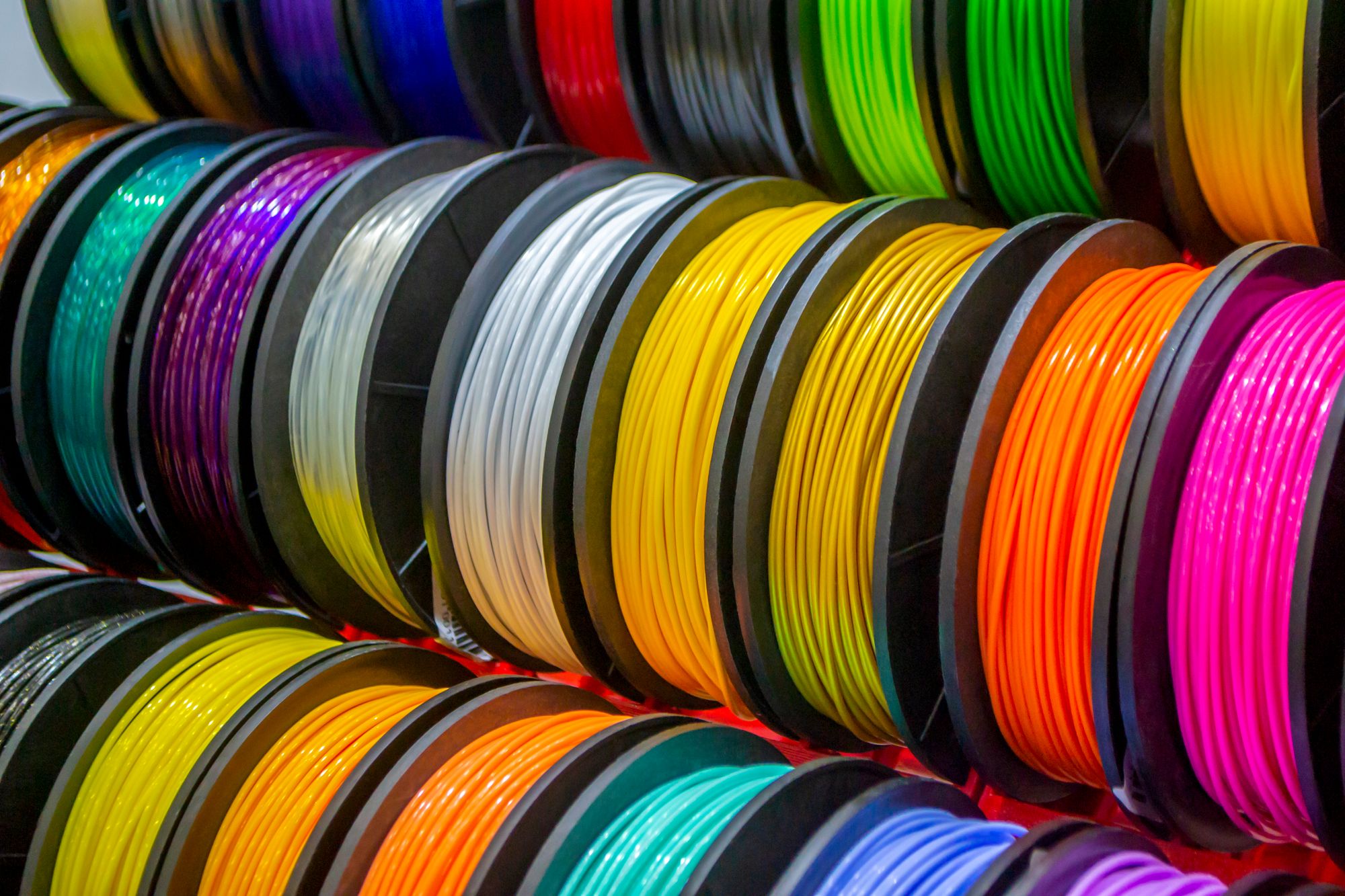In the world of 3D printing, you may be forgiven for thinking that its just a case of using plastic and loading it into your printer. You’d be right to some degree but there’s a lot more to the term “plastic” than you might think.
Our article, “The Art of 3D Printing for Gaming”, looked at the two main methods of 3D printing and how you could use those to make gaming items and accessories. As a reminder, FDM (Fused Deposition Modelling) uses rolls of filament which it heats to form layers creating the desired item. SLA (Stereolithographic) or resin printing uses a liquid resin which is exposed gradually to UV light and formed into your model.
These two methods obviously use two very different forms of what we might call plastic but both end up with similar results. However, there are different types of plastic that can be used in 3D printing which have a variety of characteristics and will have a different look and feel once printed.
Let’s then take a look at what we might expect when using different 3D printing materials and what sort of things we can make to use in the world of gaming and Anime.
Printing Methods and Materials

SLA/Resin
In the case of resin printing, there isn’t really much difference between types and brands of what’s classed as “standard” resin, with the only real choice being color! Therefore, if you’re just looking to produce miniatures, gaming pieces or dice for example, this type of resin is the easy choice.
Standard resin printing will produce smooth, hard pieces which then require very little post processing and will give a pleasing appearance if painted. The hard-wearing nature is also ideal for use in gaming where pieces are being regularly moved, handled and taken in and out of boxes.
Anime figures are probably more suited for printing with standard resins as you’ll get a high level of detail together with strength and durability. Painting and finishing will also give great results.
There are a couple of other variants you may want to consider which could give your games an extra edge over those of your playing companions.
Clear resins have the same properties as standard resins but, as the name suggests, they give you a clear, glass like finish. This type of resin would be perfect for dice, windows in model buildings or vehicles, chess pieces or even more “ethereal” gaming characters.
Water washable resins are again, as the name suggest, water washable! Now, that doesn’t mean that you can easily clean them as that’s the case with all resins. When we’re talking about water washable, this relates to the post-processing method. With standard resin you need to clean the finished print with isopropyl alcohol (IPA) but with this resin, you just need water. This actually gives you a slightly better finish to your prints so again, ideal for gaming pieces and easy to paint.
Flexible resins are a different ball game altogether but again, the name gives away the game. In terms of resin printing this is quite a difficult material to print with and for this reason not commonly used among 3D printing hobbyists. The flexibility does give it a hard but rubber like consistency which, while not necessarily ideal for small gaming pieces of figures, would be ideal for a game controller or thumb-stick cover.
FDM

FDM printing is where you can really get into trying out different materials and their attributes. The scale and diversity of your prints also really comes into play here as you can print much larger objects. This brings in the scope to print larger gaming figures such as trolls and giants and even allows you to maybe print game boards and dioramas.
Outside of the gaming realm, cosplay is a big thing with 3D printing hobbyists with the ability to print whatever you need for your particular character re-enactment. There are some great designs out there in this field and of course the genre of Anime is very well represented. Costumes, jewelry, swords and helmets; in fact anything you can think of could potentially be 3D printed.
So, what sorts of materials are we talking about? With FDM printing, the different filament materials are numerous but not all of them are either suitable or necessary for our needs in terms of gaming or Anime fandom. Some are also just ridiculously expensive so we’ll leave those alone. Let’s then take a look at the most commonly used filaments.
PLA (Polylactic Acid) is probably the most commonly used filament in the world and certainly what most hobbyists would favor. It’s an easy-to-use filament with a fairly low melting point and high strength which gives it a wide range of applications in the real world. It’s also fairly cheap to buy and is manufactured mainly from renewable sources.
In terms of 3D printing for gaming projects, the options are almost only limited by your imagination. With PLA you can print just about everything you’d need for your gaming experience, apart of course from a games console or monitor! Having said that though, it would be possible to print a console or monitor casing if your mood took you and even all the non-electronic parts of a game controller. Again though, if you’re of a particularly electronically skilled persuasion, it is possible to 3D print circuit boards! Let’s leave that “deep dive” for another day for now though.
Figures and scenery are eminently possible with PLA but you may find less detail and certainly more post processing than with resin. Dice and smaller game pieces like counters or damage rings for RPG are possible as well but you may want to use resin for extra weight, particularly with the dice. You could of course also use a 100% infill but you’re print time and filament usage would be greatly increased.
In the world of Anime, as I mentioned earlier, cosplay items are a very popular thing to print with PLA but again you need to look at infill settings to get the best strength and durability. Anime figures are of course another popular choice for 3D printing enthusiasts and PLA is the perfect medium for such models. Again, the detail may not be as fine as with resin but you’re able to work on a larger scale so fine detail will be more exaggerated.
The downsides to PLA are that it’s not resistant to sunlight or adverse weather conditions so will deteriorate if you decide to use your prints outside for lengthy periods. This is particularly worth noting for cosplay items.
ABS (Acrylonitrile Butadiene Styrene) is probably the second most used 3D printing filament but is catching up fast with PLA. You’ll, I’m sure, be aware of the famous Danish building bricks and since 1963, these have all been made from ABS. In fact, the company actually uses 3D printing with ABS in its design and prototyping stage of manufacture. Unfortunately through, they haven’t yet brought out a range of Anime themed sets but time will tell!
Actually, a lot of children’s toys are manufactured from ABS and this is due to its resilience, rigidity and impact resistance. Toys and similar items need to have a long usage while being safe and ABS provides that.
Although ABS is a different material to PLA it can be used for all the same things you would print with PLA. The advantage of course is its strength but downsides can be the higher working temperatures and inflexibility which can cause printing issues.
Next, let’s move on to PETG (Polyethylene Terephthalate Glycol) which is another hard-wearing material but also a bit more of a challenge to print with.
Although PETG isn’t the most commonly used 3D printing filament, it’s certainly the most prolific plastic-based material in common use around the world. These uses include things like cups, lunch boxes, key fobs, outdoor plant pots, small handheld tools and moving parts for models. The most common use though is for drinks bottles and PETG is used in virtually every instance here.
In terms of 3D printing for gaming and Anime, with PETG you’re getting a higher rigidity and strength as well as being waterproof and resistant to higher temperatures. Now, not all of these properties are necessary for games pieces and figures etc. but may well come in handy for your cosplay needs.
The final filament we’re going to look at for now is TPU (Thermoplastic Polyurethane) which is a lesser used material in terms of 3D printing.
The reason for this may be the limitation in uses as TPU could most closely be compared to the flexible resin that I covered earlier. When printed, TPU has a rubbery feel and flexibility which is ideal in daily life for things like key fobs or dog toys etc. but not necessarily suited to gaming projects or Anime figures.
Again though, Anime cosplay could benefit from the use of TPU for certain costume parts which may need to be more flexible and shall we say, “figure hugging”.
In gaming terms, we’re again looking at covers for controllers but maybe even gaming pieces if you want to add a bit of a different feel and aspect to your gameplay. TPU would also make a durable and easily portable gaming surface as you’d be able to roll it for storage. It’s also water resistant so would be ideal at protecting the table from drinks spillage!
Material Variations

We’ve discussed the most commonly used filament types for 3D printing at home but there are a multitude of different chemical variations which provide different attributes to the finished article. The majority of these though are more aimed at industrial uses and for things like car parts and electrical components. Its therefore not worth mentioning every type of filament out there as you’ll soon become weary!
However, there are certain types of the four filaments I’ve mentioned which have either had an additive or have certain color changing properties that may enhance your project.
For instance, PLA can be purchased that has a wood additive which actually looks, feels and even smells like natural wood. These can be quite expensive so only use if you’re confident that your printer won’t eat it up but the possibilities of making wooden game pieces and other figures from 3D printed wood are exciting. The obvious choice would be for chess pieces and even the board but wooden building for RPGs and wooden costume pieces for cosplay are also great options.
If however, you’re not in the budget of buying expensive wooden filament, you can still get that wooden look by purchasing wood effect PLA. There is no difference to standard PLA and no wooden additive but the grained effect when printed is quite pleasing.
Other options relate mainly to color and a good result can be achieved by using rainbow PLA. This does what it says and has different colors at different parts of the filament spool. Be careful though with your purchase here as some rainbow filaments don’t change color repeatedly enough so you end up with a batch of purple prints then some yellow, some red and so on. Unless you’re printing a large object, the colour rainbow element is completely lost. Make sure to check for a filament that has a high repetition rate.
If its color changes you’re after then there are two other types of PLA that you can get. The first changes from one color to another by means of heat change. This would be more suited to items or areas where the temperature of the printed model is going to change so maybe gaming isn’t the ideal use. The better option therefore maybe to use a filament that has colour changing properties due to light reaction.
The most commonly available of these is glow-in-the-dark which, when subjected to UV light for a period of time, will become phosphorescent when placed in the dark. This could be a great way to enhance your gameplay with dimmed lighting and used for pieces with magical powers for instance.
Another light reactive filament is one that changes color as it is moved. This is almost the same effect as pearlescent paint that you might see on a car which seems to change color as it moves in the sunlight.
Both of these are great effect-based filaments but can be on the pricey side and have limited availability, so look out for bargains if you can find them.
Other variations
Possibly the most commonly overlooked variation with any filament or resin is the finish. Similarly to household paints, you’ll be presented with either a matt or a silk texture to the filament so its worth deciding what sort of final look you want to achieve. Other options such as PLA+ are available at a premium and will invariably give slightly better printing results but for the purposes of gaming projects, the “+” bit isn’t entirely necessary.
There’s also then quality of filament and this can usually be determined by two main factors: price and popularity. If something is too cheap then it’s likely to be of a lower quality. For example, you should be looking to pay around $20-25 for an average 1KG (2.2lbs) spool of standard PLA. If something is cheaper then look at customer and online reviews. If they’re favorable then go for it but in my experience, it’s generally better to pay a little bit more and ensure better quality.
And Finally…
We’ve looked at what 3D printing materials you can use for your gaming and Anime projects and I’ve made a few suggestions of potential uses within those realms. We’ve also discussed a few of the variations you could use and what effects can be achieved with these.
All in all though, the materials and method that you use to create your projects is down to your choice, what you can afford and what you want to get out of it. It’s safe to say though that the world of 3D printing is enhancing the gaming, Anime and cosplay experience immeasurably and the only limitation is you imagination!











Member discussion